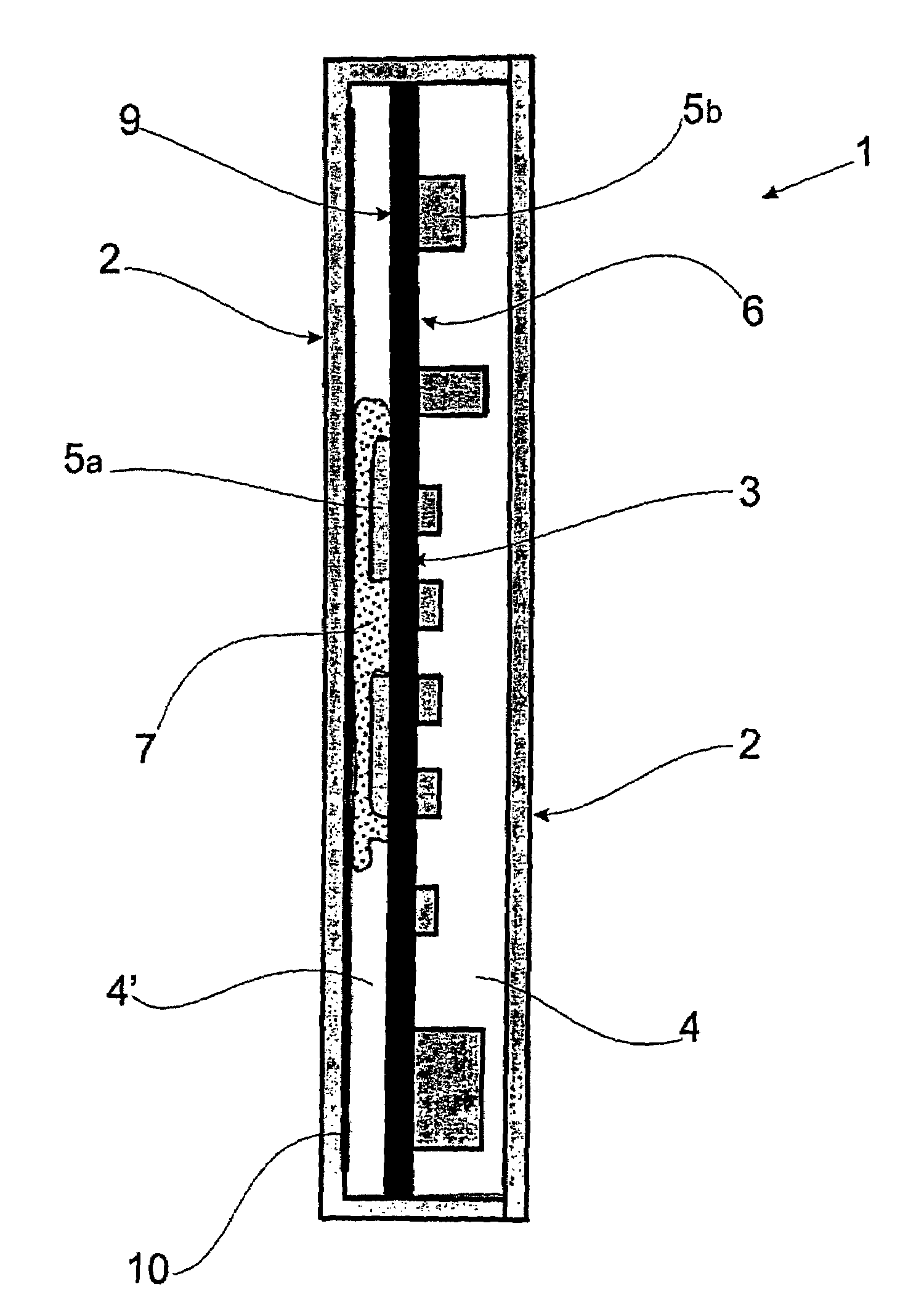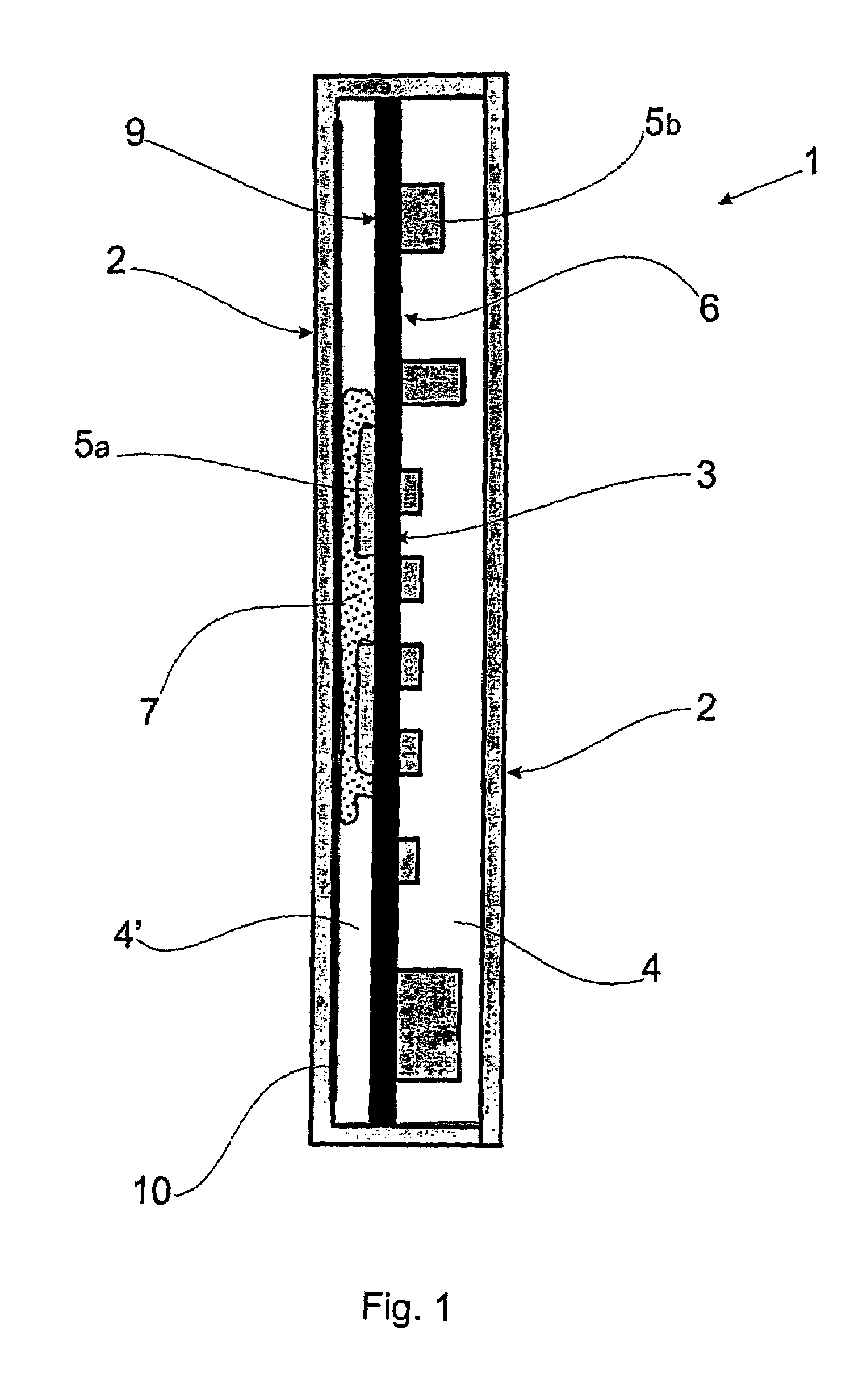Electronic device
a technology of electronic devices and components, applied in the field of electronic devices, can solve the problems of increasing the labor of mounting each component, requiring a considerable physical space inside the equipment, and generating heat by the components, and achieve good thermal coupling
- Summary
- Abstract
- Description
- Claims
- Application Information
AI Technical Summary
Benefits of technology
Problems solved by technology
Method used
Image
Examples
Embodiment Construction
[0022]According to a preferred embodiment and as can be seen in FIG. 1, the electronic device 1 is formed by an envelope 2, a closed chamber 4, a dissipation chamber 4′, a printed-circuit board 3, electronic components 5a, 5b, a filling 7 and a dissipation film 10.
[0023]The envelope 2 is preferably formed from a rigid polymeric material and can assume different geometric shapes. The polymeric material imparts electric-insulation characteristics to the envelope 2.
[0024]The chamber 4 is delimited by the envelope 2 and represents the empty space formed inside the device 1. The printed-circuit board 3 provided with electronic components 5a, 5b, the filling 7 and the dissipation film 10 are inserted into the chamber 4.
[0025]The printed-circuit board 3 is positioned inside the device 1, so as to define a dissipation chamber 4′, which comprises the electronic components 5a, which are associated to the first surface 9 of the plate 3. The plate 3 has also electronic components 5b, associated...
PUM
 Login to View More
Login to View More Abstract
Description
Claims
Application Information
 Login to View More
Login to View More - R&D
- Intellectual Property
- Life Sciences
- Materials
- Tech Scout
- Unparalleled Data Quality
- Higher Quality Content
- 60% Fewer Hallucinations
Browse by: Latest US Patents, China's latest patents, Technical Efficacy Thesaurus, Application Domain, Technology Topic, Popular Technical Reports.
© 2025 PatSnap. All rights reserved.Legal|Privacy policy|Modern Slavery Act Transparency Statement|Sitemap|About US| Contact US: help@patsnap.com


